11 Wildflowers That Grow in California (Identification Guide with Pictures)
-
Elizabeth Gray
- Last updated:
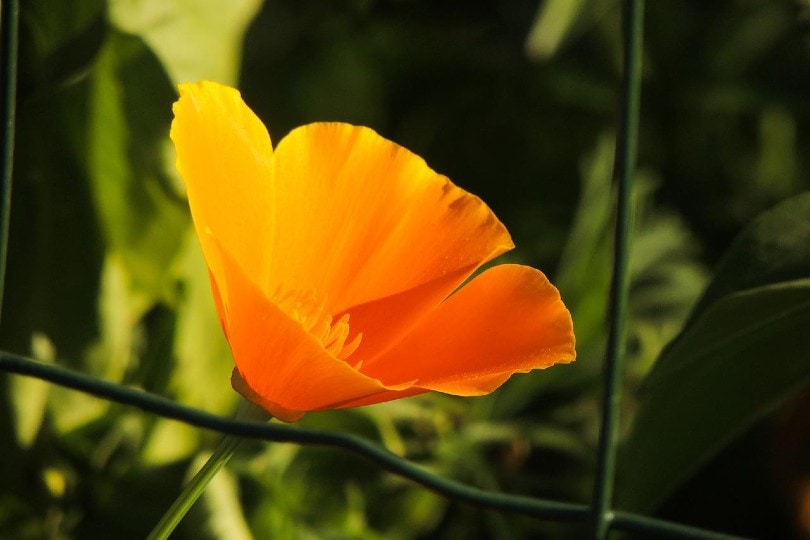
California’s landscape and climate offer a diversity unlike any other. From sunny beaches to snowy peaks with a bone-dry desert in between, this state is also home to many dazzling native plants. Take a hike during the spring and summer months, and you’re sure to find multiple hues dotting the landscape. Here are 11 of the most gorgeous wildflowers that grow in California.

The 11 Wildflowers That Grow in California
1. California Poppy

| Scientific name: | Eschscholzia californica |
| Bloom time: | February-September |
This gorgeous bloom is the state flower of California. The California poppy is native to the state but occurs elsewhere in the western United States. It’s found throughout the state at elevations up to almost 7,500 feet and grows in mounds, reaching 6-12 inches in height.
California poppies are found in red, orange, and yellow coloring and attract pollinators like bees. These wildflowers can be either annuals or perennials and grow in many soil types, from clay to sand.
2. White Fairy Lantern
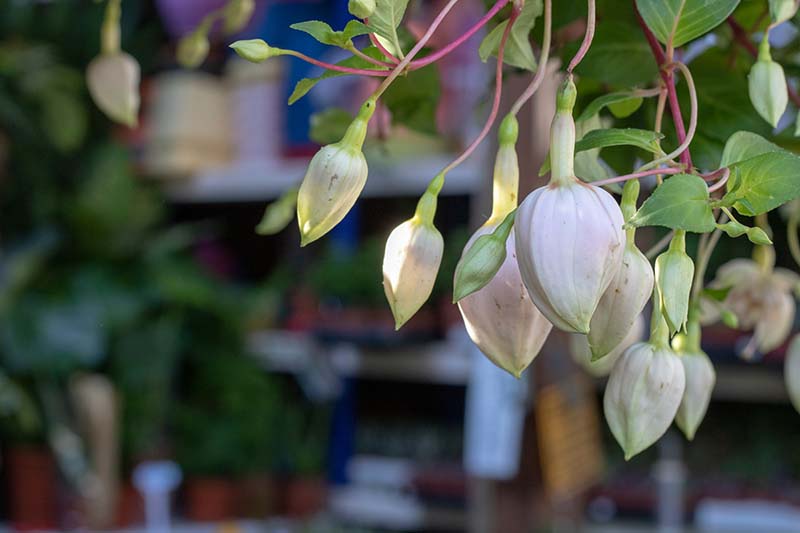
| Scientific name: | Calochortus albus |
| Bloom time: | April-May |
These perennial wildflowers grow in wooded mountain ranges up to 6,000 feet. They’re found in the coastal mountain ranges and the Sierra foothills in California. White fairy lanterns grow up to 30 inches tall and bloom only in the spring.
They prefer partial shade growing conditions, well-drained soil, and are drought-tolerant. Historically, native Californians used the bulbs of this plant as a food source. Unlike some wildflowers, this one is hard to plant and grow as a landscape feature.
3. Indian Paintbrush
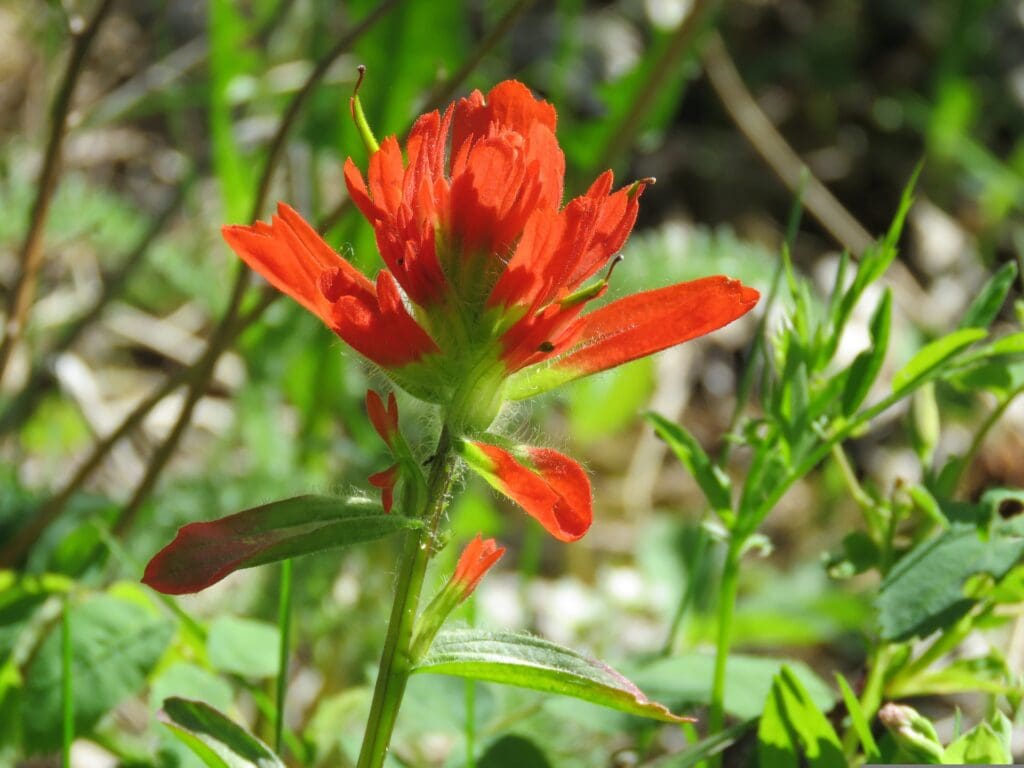
| Scientific name: | Castilleja affinis |
| Bloom time: | June |
This beautiful native wildflower grows along the coast statewide, as well as inland in grasslands and partial desert habitats up to over 8,000 feet. Indian paintbrush plants produce bright, red-orange flowers which attract pollinators like bees and butterflies. This wildflower feeds itself by infiltrating the root system of other nearby plants and sapping some of their nutrition.
Don’t worry; the other plants usually aren’t impacted by this. The Indian paintbrush can grow in sandy soil and is drought-tolerant once fully established. Multiple sub-species are also found in California.
4. Purple Nightshade
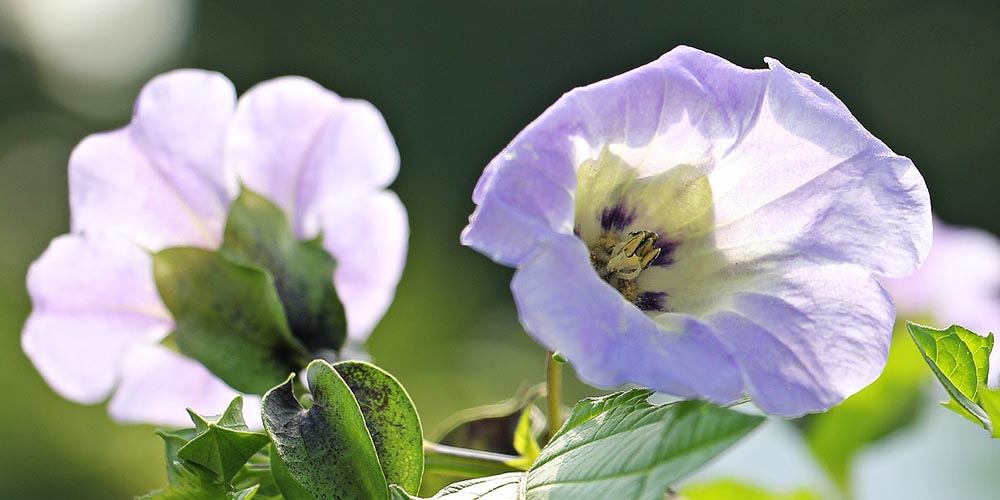
| Scientific name: | Solanum xanti |
| Bloom time: | February-June |
Purple nightshade is a perennial, spreading vine that grows among taller trees in valleys, canyons, and foothills. In California, it’s found mainly in the southern part of the state at elevations up to 4,000 feet, with some distribution around the Bay Area and the Sierras. It requires more rain than many California wildflowers and partial-sun light conditions.
The flowers are blue-purple and one of the earliest bloomers. The purple nightshade attracts several species of butterflies and moths. However, it is toxic to humans and some animals. Avoid growing this wildflower anywhere kids or pets could encounter it.
5. Sky Lupine
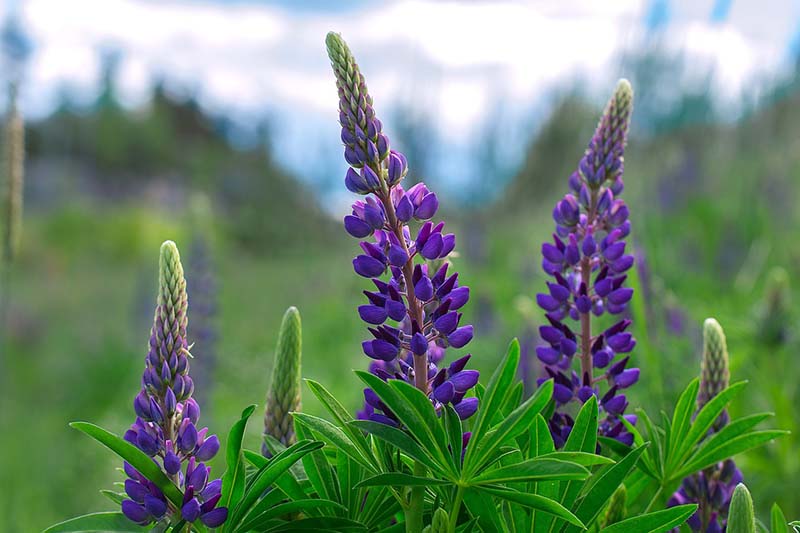
| Scientific name: | Lupinus nanus |
| Bloom time: | March-May |
The sky lupine is one of the most widespread California wildflowers. This annual plant is common in grasslands, clearings, and slopes of the coastal and Sierra Mountain ranges. The fragrant blue and lavender flowers attract bees, butterflies, moths, and hummingbirds.
Sky lupines prefer full sun conditions and grow in various soils, including sand and clay. It can be grown from seed for those interested in planting native California wildflowers in their landscape.
6. Johnny Jump-Up
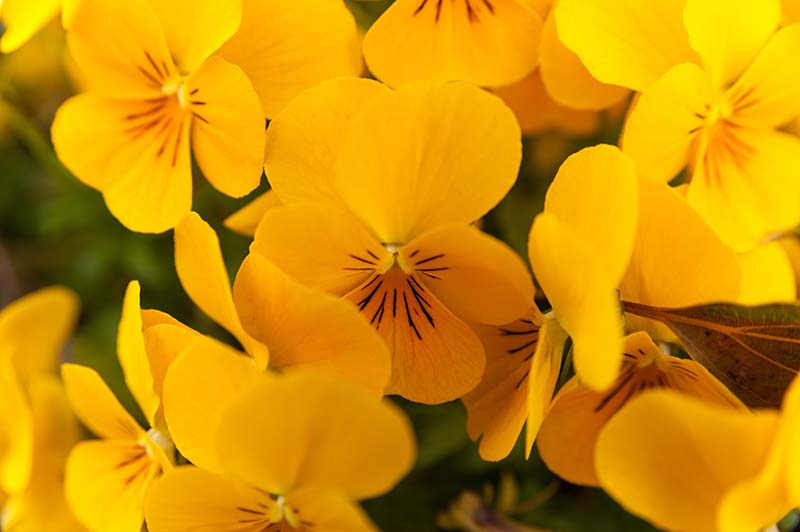
| Scientific name: | Viola pedunculata |
| Bloom time: | March-April |
Also called the yellow pansy or the California golden violet, this bright, perennial wildflower grows along the California coast from Baja north to Sacramento, up to about 3,000 feet elevation. It likes full sun to partial shade light conditions and moist soil.
The yellow flowers typically grow low to the ground but can get up to about 18 inches tall. They attract a variety of butterflies and are often planted in butterfly gardens. Johnny jump-ups require a moderate-high amount of water.
7. Miner’s Lettuce
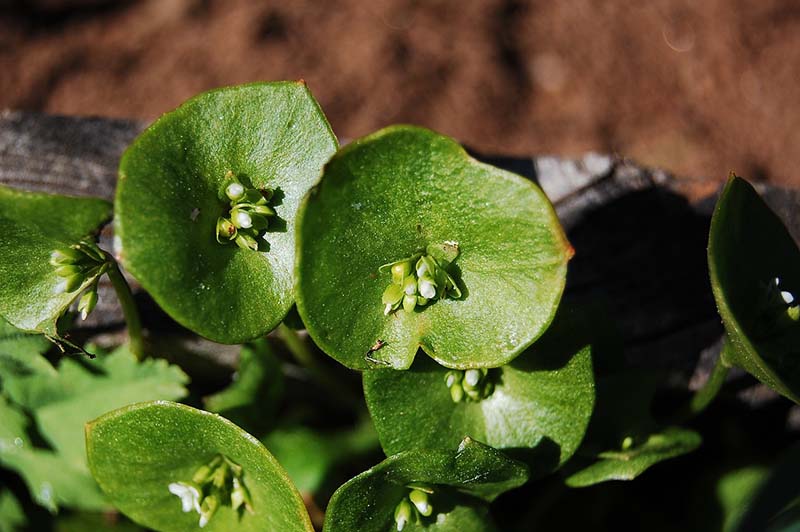
| Scientific name: | Claytonia perfoliata |
| Bloom time: | February-June |
This unique, annual wildflower is found throughout the state of California and much of the western United States. The green leaves of this plant are edible, which is how it earned its name. Small, white flowers bloom from late winter to early summer and stand out against the large leaves.
Miner’s lettuce is a spreading, trailing plant and often serves as a ground cover beneath taller trees. It prefers moist soils and grows well in partly shaded areas. The plant also serves as a food source for a variety of insects.
8. Island Morning Glory
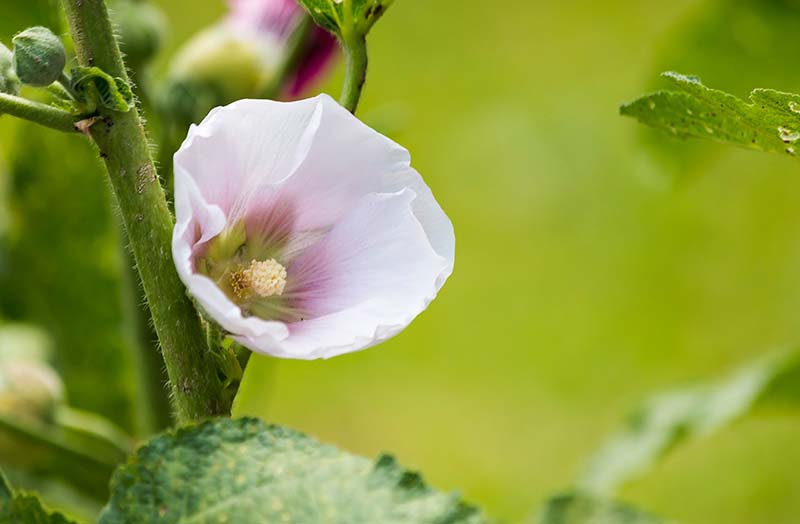
| Scientific name: | Calystegia macrostegia |
| Bloom time: | March-August |
Island morning glory is found along the California coast from Monterey south to Baja, including the Channel Islands. This perennial wildflower forms a low bush or, if given a chance, climbs any available trees, trellises, or fences.
Island morning glory produces white to pale pink flowers over several months. It grows quickly and serves as a host for several butterfly and moth species. There are six sub-species of this wildflower also found in California. It enjoys full sun and has minimal water requirements.
9. California Fuchsia
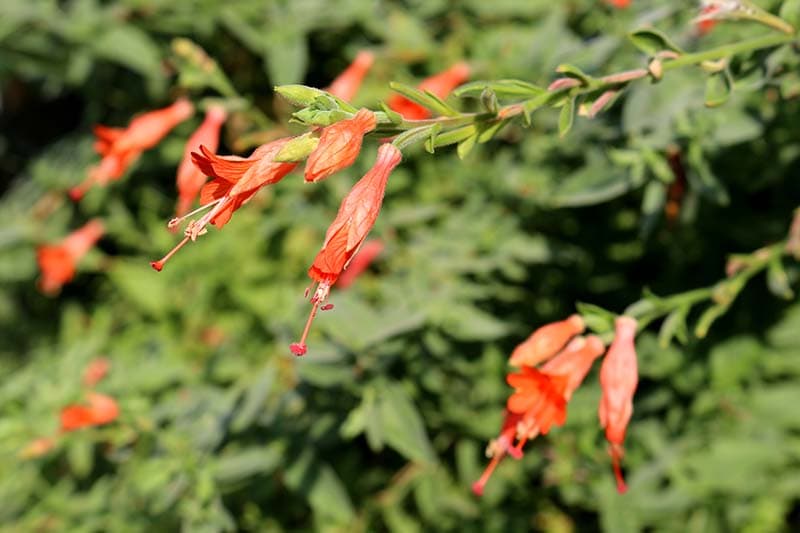
| Scientific name: | Epiliobium canum |
| Bloom time: | June-December |
This unforgettable native California wildflower has one of the latest bloom seasons of any plant in the state. That’s because the California fuchsia serves as a critical food source for hummingbirds and the bloom season occurs when these tiny birds need fuel for migration. This plant is found throughout the state in foothills and coastal areas, and the bright red flowers first appear in mid-summer. California fuchsia prefers wetter soil and is often found near water sources. It is easily grown as a native landscape plant and is popular because it’s so attractive to hummingbirds.
10. Tidy Tips

| Scientific name: | Layia platyglossa |
| Bloom time: | March – July |
This annual wildflower is in the sunflower family, producing 2-inch blooms in spring and summer. Tidy tips is a striking flower featuring yellow rays with white tips. It attracts many insects, including butterflies and other pollinators. This plant is found in several habitats, including grasslands and dry foothills.
Its California range includes the coastal mountain ranges, Central Valley, and the Channel Islands. Tidy tips are often planted as part of native wildflower mixes in butterfly gardens. They prefer full sun and have moderate water requirements.
11. Sticky Monkey Flower

| Scientific name: | Diplacus aurantiacus |
| Bloom time: | March-May |
Also called the bush monkey flower, this perennial is a small, flowering shrub found throughout the southwestern United States. In California, the sticky monkey flower is found all over the state in a variety of habitats. Forests, cliffs, and rocky hillsides host this wildflower that attracts many insects and butterflies.
The leaves of this plant are covered in a sticky substance, and bees and hummingbirds feed on the nectar. The flowers can be any shade from white to red but are usually light orange.

Conclusion
Many of these native wildflowers are easy to grow as part of commercial or private landscape design. Growing native plants helps local pollinators thrive and benefits the ecosystem’s health. If you’re interested in adding native California wildflowers to your garden, visit a local garden center to choose the ideal species for your growing conditions.
See also: 12 Wildflowers That Grow in Maine (Identification Guide With Pictures)
Featured Image Credit: VIVIANE6276, Pixabay
Contents
